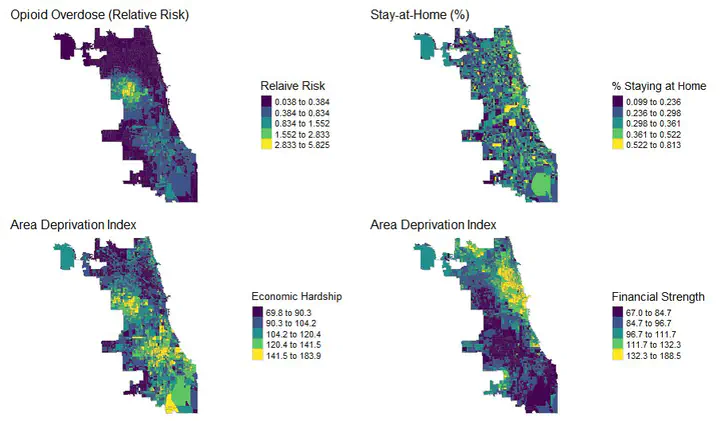A Multivariate Conditional Autoregressive Model of the COVID-19, Opioid and Gun Violence Syndemic
 Image credit: Me
Image credit: Me
Abstract
Monitoring the spatial and temporal course of opioid-related drug overdose mortality is a key public health determinant. Despite previous studies exploring the evolution of drug overdose fatalities following the stay-at-home mandates during the COVID-19 pandemic, little is known about the spatiotemporal dynamics that mitigation efforts had on overdose deaths. The purpose of this study was to describe the spatial and temporal dynamics of overdose death relative risk using a 4-week interval over a span of 5-months following the implementation of the COVID-19 lockdown in the city of Chicago, Illinois. A Bayesian space time model was used to produce posterior risk estimates and exceedance probabilities of opioid-related overdose deaths controlling for measures of area level deprivation and stay-at-home mandates. We found that area-level temporal risk and inequalities in drug overdose mortality increased significantly in the initial months of the pandemic. We further found that a change from the most to least deprived area increased the relative risk of a drug overdose risk by 44.5%. The social distancing index measuring the proportion of persons who stayed at home in each census block group was not associated with drug overdose mortality. We conclude by highlighting the importance of contextualizing the spatial and temporal risk in overdose mortality for implementing effective and safe harm reduction strategies during a global pandemic.
Download the presentation here.